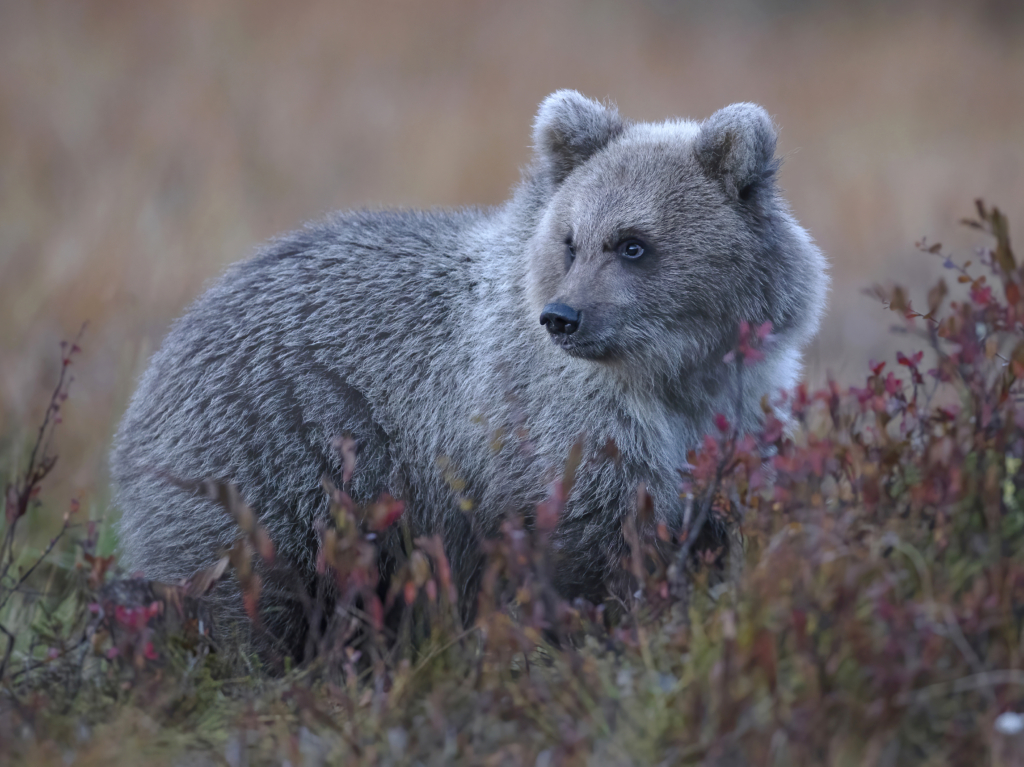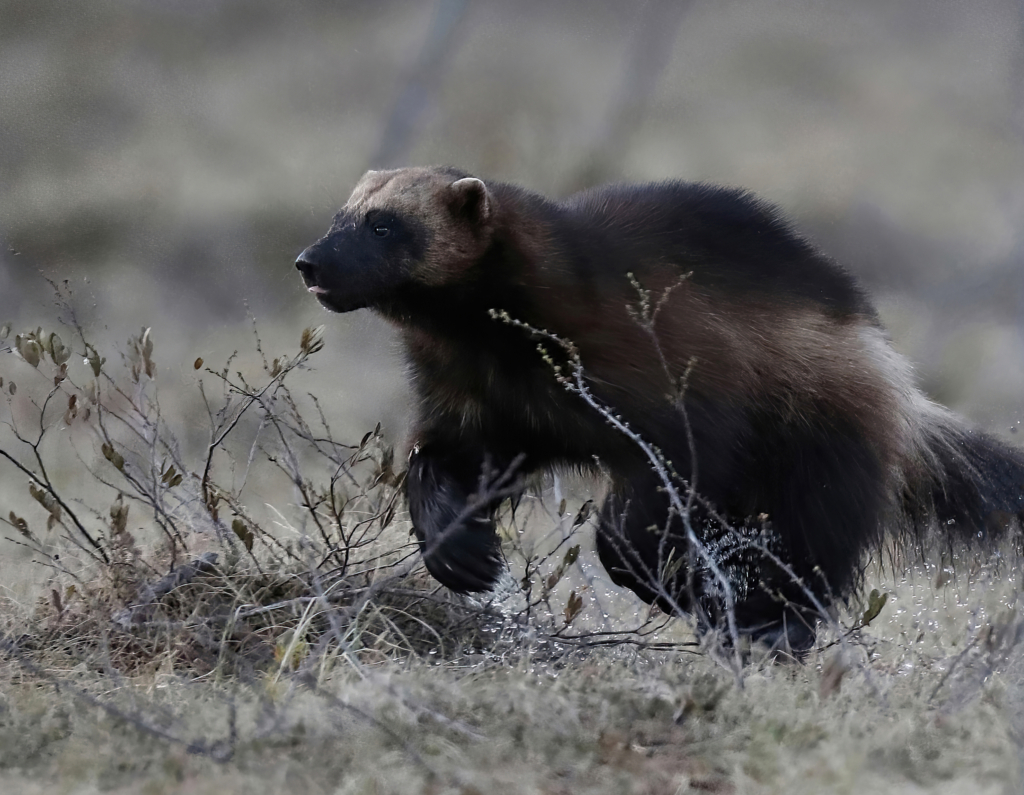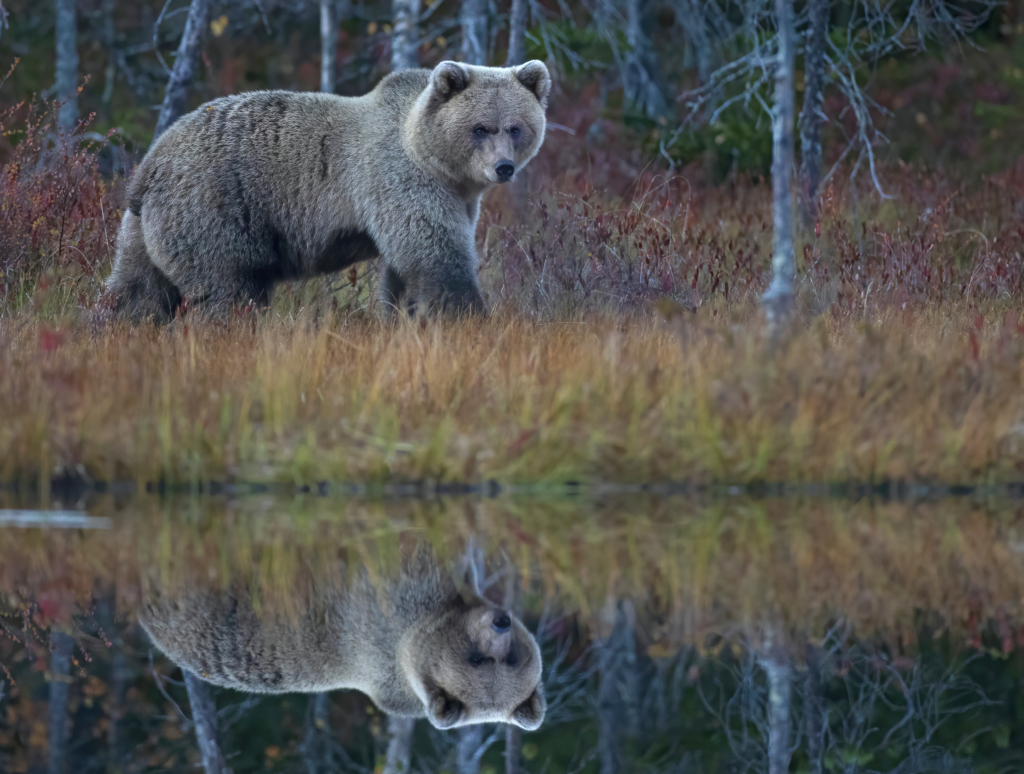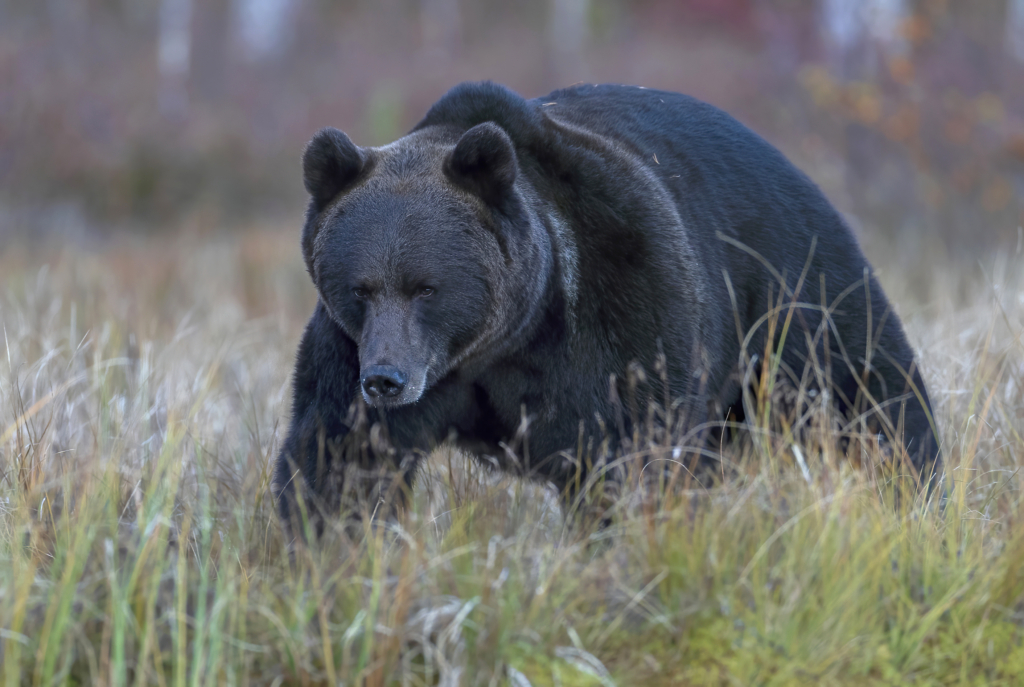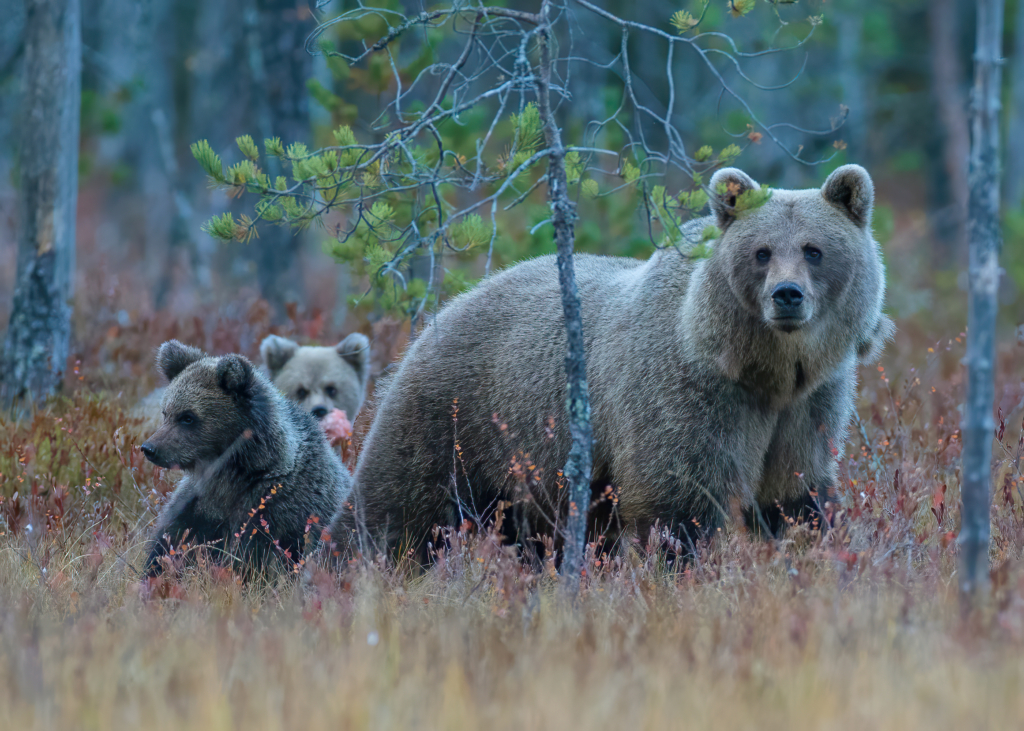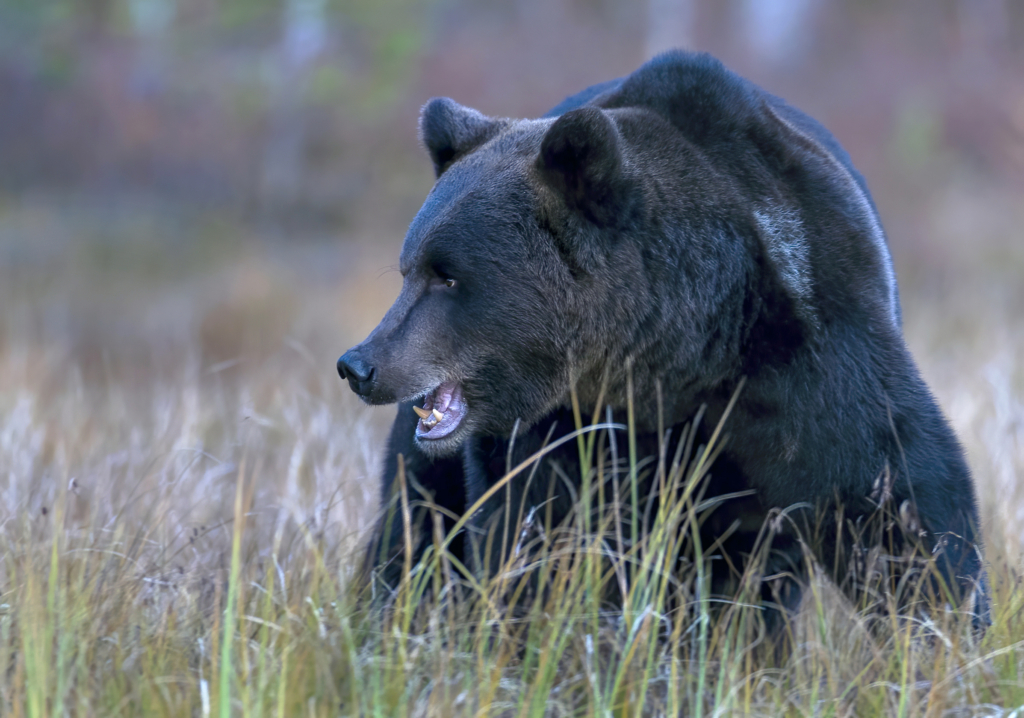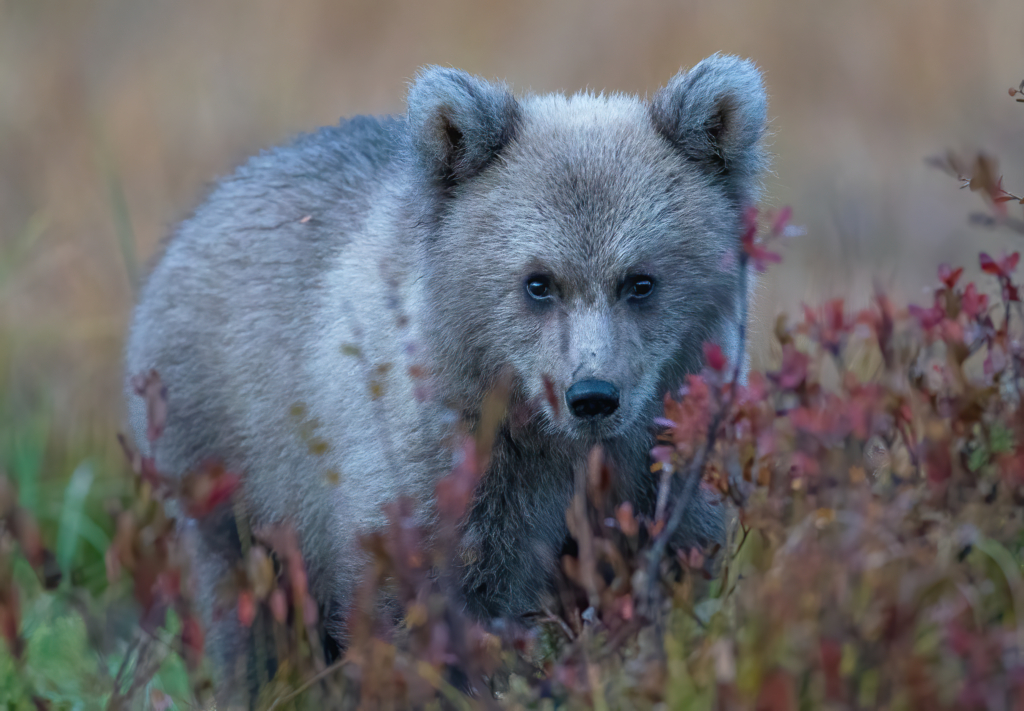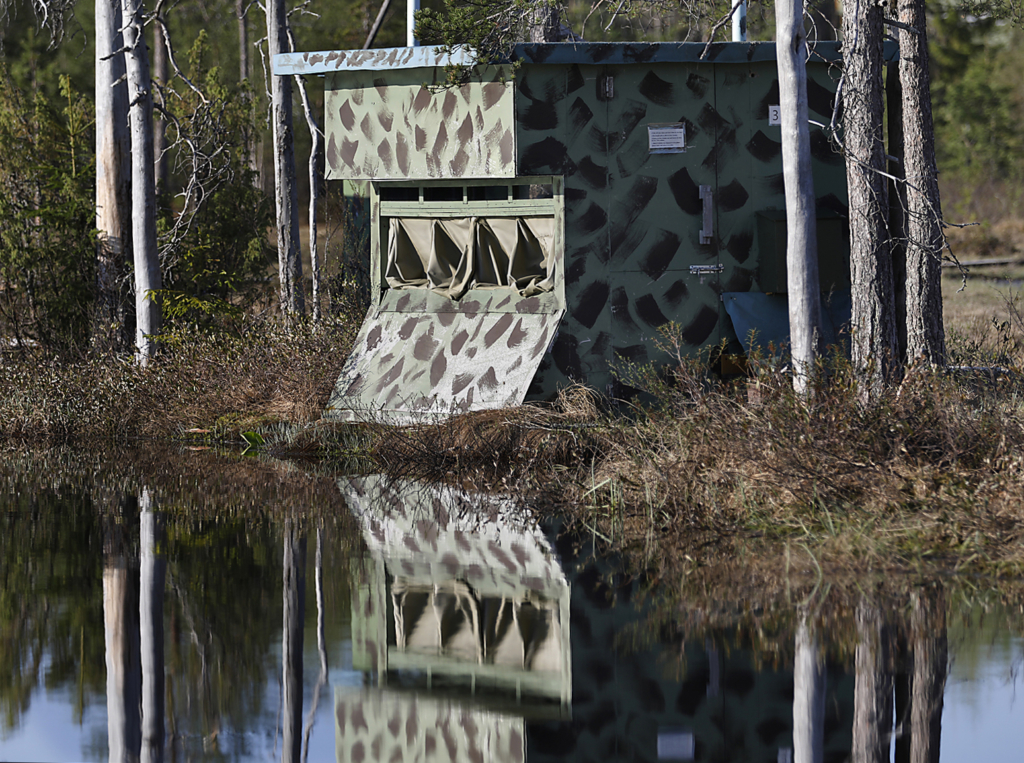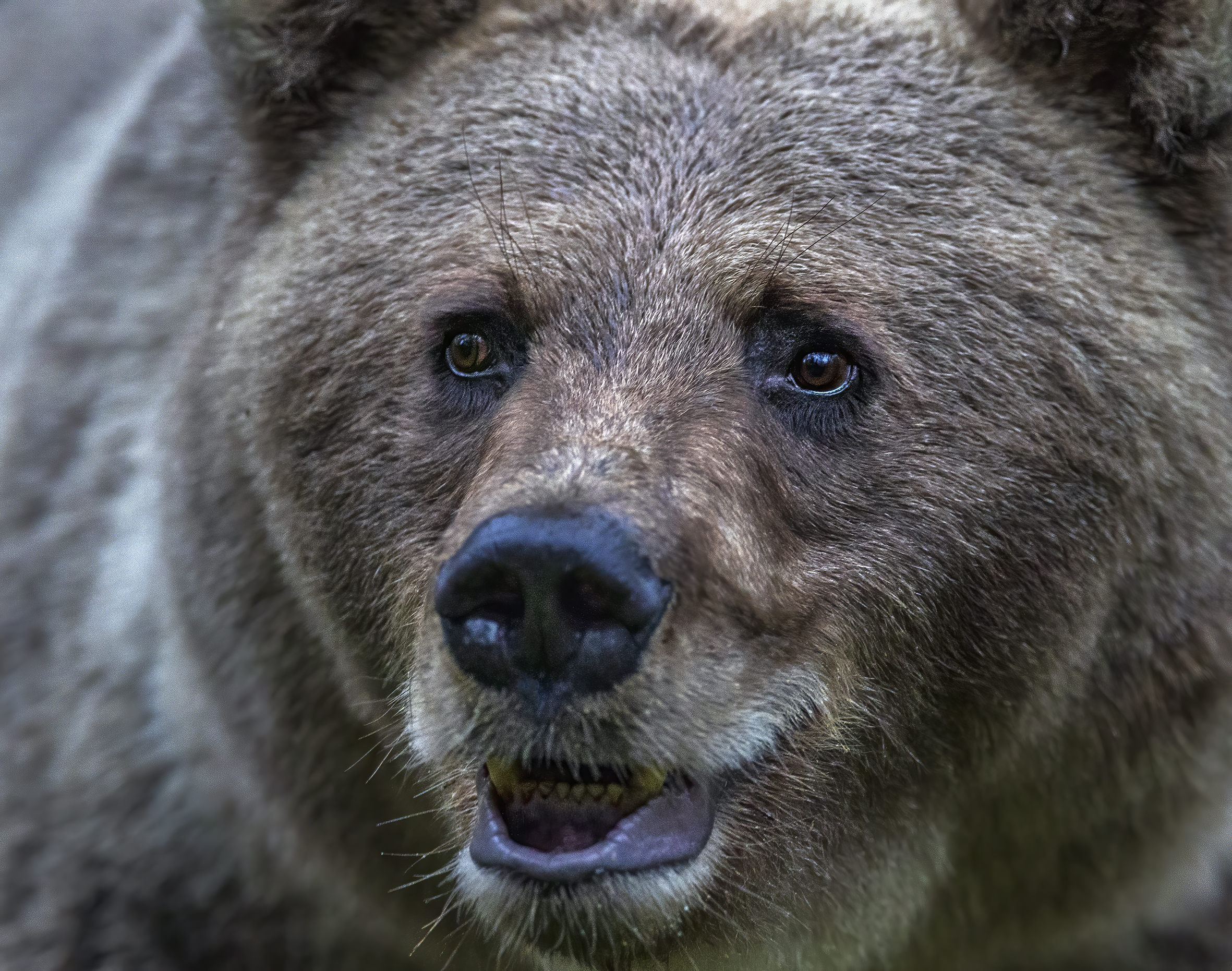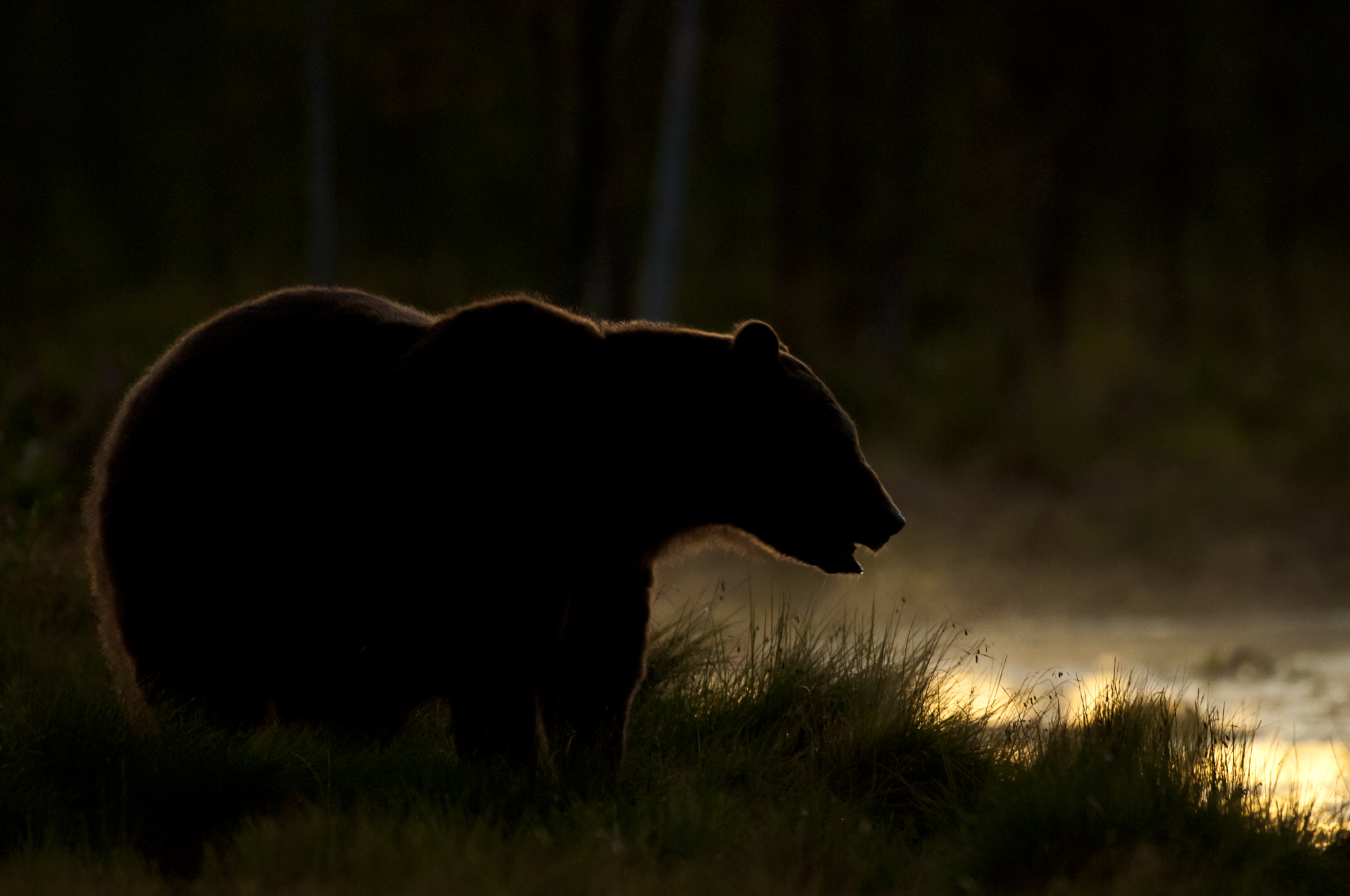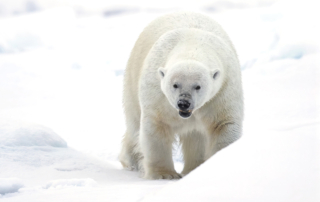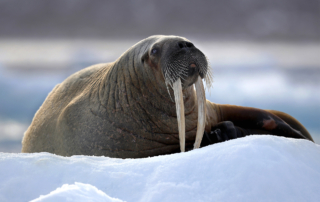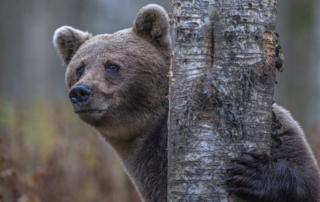Some highlights
- Great place to see and photograph a number of different bears and wolverines up close
- The colors of the autumn forest provide a chance for unusually colorful pictures
- Completely different forest as a background than many other predator photo places have
- The White-tailed eagle is a regular guest at close quarters and a chance for wolves
- Well-built and run-in hides, in good quality
- The tour guide runs thorough workshops in “optimal camera use”
- You get your own photographic advice and tips in a small group of like-minded people
THE BEAR’S LANDSCAPE
The border between Finland and Russia is one hundred and thirty miles long and runs through unpopulated forests and wastelands. The area we visit is less than two kilometers from the Russian border. On the Russian side is the large nature reserve Kostamus, which together with the wilderness on the Finnish side creates fantastic environments for bears and other animals. The land where the hides are located has been a private nature conservation area since January 2016, and all hunting has been prohibited since then. This means that all animals in the area can live in a calm and protected environment. Here, the conditions for seeing and photographing not only bears, but also wolverines are among the best in all of Europe. With a bit of luck, even a wolf will pass by.
PHOTOGRAPHING BEARS
When you sit and wait, the greatest possible patience and silence apply. For us urban souls, it is unusual to listen to the silence. It is not absolute but can still feel oppressive to someone. Or liberating for others. You have to make an effort to hear sounds. Two herring crabs leaning against each other squeak softly. A larger woodpecker hops scrambling on a pine trunk some distance away. But jet planes don’t seem to have any frequented flight paths within earshot and it’s many miles away to busy roads. Everything signals peace.
Suddenly a raven warns. Then it’s quiet again. We strain our ears and eyes. There seems to be something going on as the raven warns again. It is twilight. At the edge of the forest a few hundred meters away, we sense a movement between the trees. And again. Now a bit further to the left. With the help of the binoculars, we see the silhouette of a bear. It looks dark and moves with purpose. But we hear no sounds from it. After a while it is near us. Less than a hundred meters away. It knows that there is usually something edible here. Now we also hear the bear pawing around in the wet moss. Our cameras with long telephoto lenses are ready to shoot. The silence is suddenly broken by the clatter as we fire off. But the bear is sober. It knows we’re sitting there, but it also knows it doesn’t need to worry. As long as we only do things that the bear is used to, it has food.
THE HIDES AND THE ARRANGMENT
This tour offers a combination of great opportunities to photograph the Nordic predators from a series of hides to detailed wildlife photography workshop sessions. A good training opportunity for wildlife photography. The hides are of high quality, with good chairs and mounts for tripod heads, where each participant has two “photo windows”. The hides are equipped with portapotti toilets.
The tour guide Jan Gyllensten has 40 years of experience in sports photography, where he has gathered a broad experience of what works “when it matters and when it goes fast”. Knowledge that is very useful also when we want to capture the important moments out in nature. Since 2017, Jan has devoted himself entirely to nature photography.
Since the predators here are used to mainly appearing in front of the hides during the afternoon and early evening, we use the mornings for the workshop sessions. Then we can try out any newly acquired knowledge in practice, in the hides after lunch and during the afternoon until darkness falls. During the theory sessions, we discuss how to use the camera equipment in the best way. Photographing predators and birds among tree trunks in a terrain where the light becomes more beautiful, but less of it, the longer the evening progresses, demands to be there when it happens and to be able to use your equipment in the best way. Despite the fact that it gets dark at half past seven in the evenings in September and lightens relatively late in the morning, and that the animals do not appear until the afternoons, we will spend the night in the hides, as it is inadvisable to go back to our base in the dark. We have comfortable rooms at our base where we can rest a little during the morning and afternoon. For those who want to take photos also in the mornings, there is a bird feeder outside the lodge.
WORKSHOP
The theme for the workshop part of the trip is “Optimal use of the camera equipment”. Today’s cameras are very advanced with a lot of automation and AI. But basically there are a number of input values that the camera’s data circuits do not always handle optimally. Then it can be a clear advantage to acquire good knowledge of how different things actually work in the camera; exposure metering, ISO, shutter speeds, aperture, depth of field, auto-ISO, shutter speed & aperture preset, manual setting, compensations, different autofocus systems and AF methods, etc.
On the last day, we look at each other’s best photos from the days here and give positive feedback to anyone who wants to (showing photos is, as usual, completely voluntary if any participant feels they don’t want to show their photos).
Itinerary
Day 1 (1/10) (Dinner)
Arrival at the base camp in Vartius at around 19:00 on 1 October. We make ourselves at home, eat dinner and get information for the coming days. We spend our first night at our camp
Day 2-5 (2-5/10) (Breakfast – Dinner)
Breakfast, workshop and small bird photo time in the morning. The dinner will be the main goal of the day. (On day 5 there will be a photo display of your own photos taken during the trip). After lunch, departure to the hides, with sandwich pack & coffee/tea. Concentrated photo during the time when the predators here are usually most active.
Day 6 (6/10) (Breakfast)
Breakfast and departure to the airport, with a coffee break during the journey.
Arrival Kajanni airport no later than 10.00
Photographic leader
Jan Gyllensten, born in 1955, began his photography career when he dropped out of school at the age of 16 and took an apprenticeship as a photographer. Then devoted himself for 40 years to sports photography and managed to cover 6 Olympic Games and more than 50 WC, EC and WC finals.
In 2017, Jan decided to retire and stop photography. From before, there was a great interest in animals/outdoor life, which led to several mountain hikes, but never with a camera… (“I would be free, after all…”)
Jan probably quickly became a troublesome pensioner, as both his wife and good friends asked why he didn’t bring a camera and try to photograph the birds and wildlife he could spend hours just looking at…?
It was just an attempt, because then Jan was completely sold on photographing nature and perhaps above all birds of prey and wild animals. Traveling has been in the blood since the days of sports photography, and the last five years have therefore again become a lot of traveling for Jan and his cameras…
Jan has his photographic roots in analog and mechanical photography, long before there were autofocus or other automatic functions in our cameras. Back then, knowledge of light metering, ISO values, shutter speeds, aperture and depth of field were crucial to being able to take a good picture. Today, Jan is happy to share his thoughts on how these parameters can be combined in various ways with the automatic capabilities of our modern cameras.
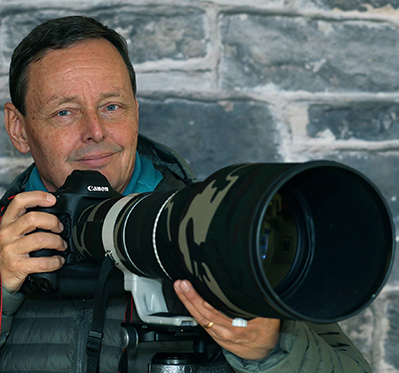
Error: Contact form not found.


